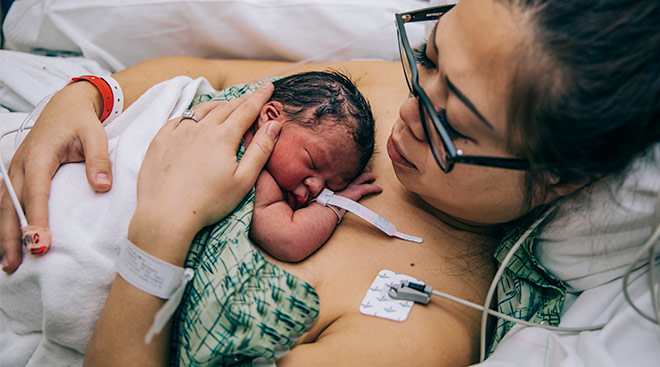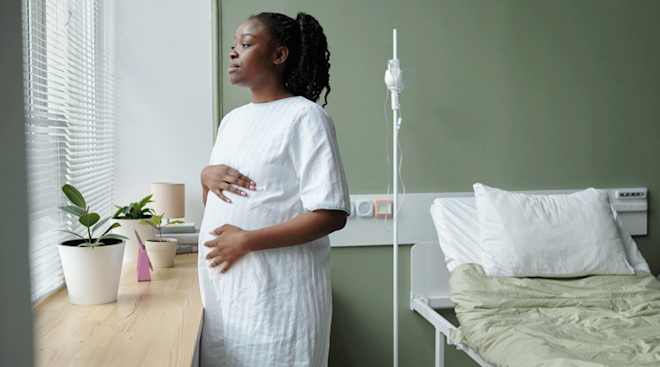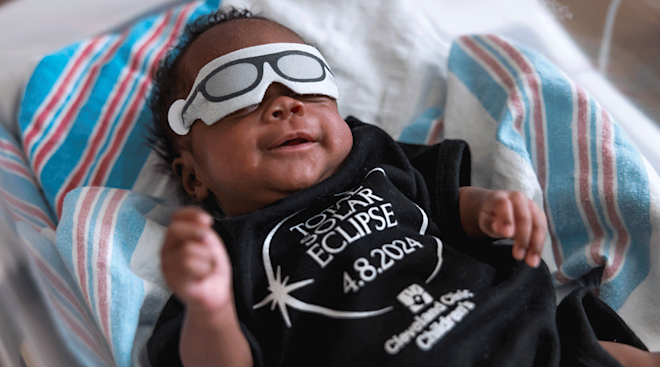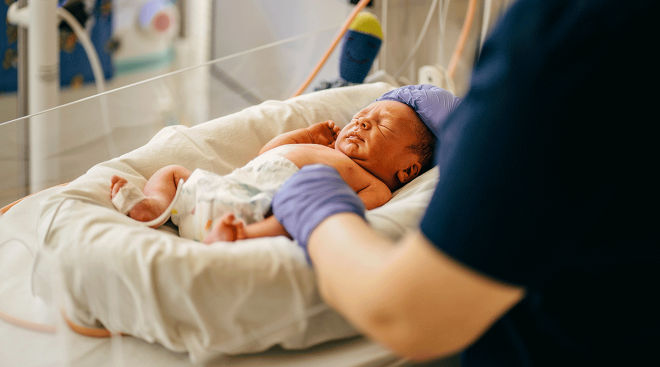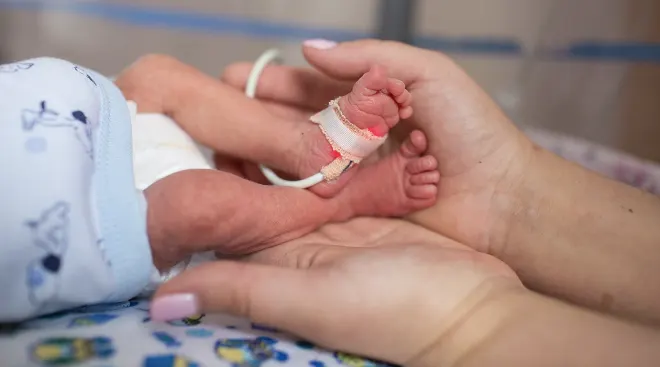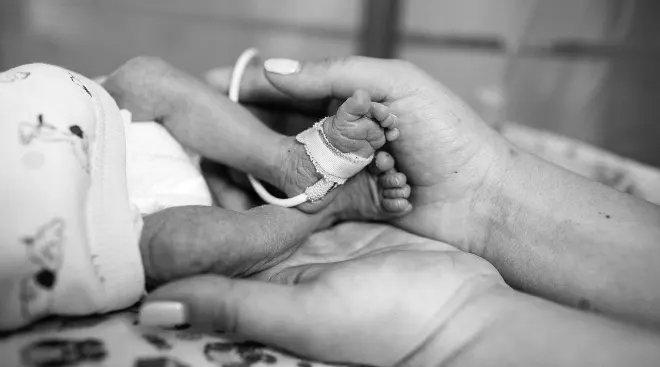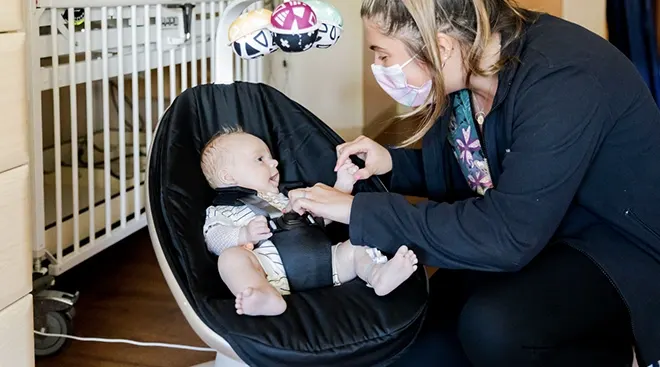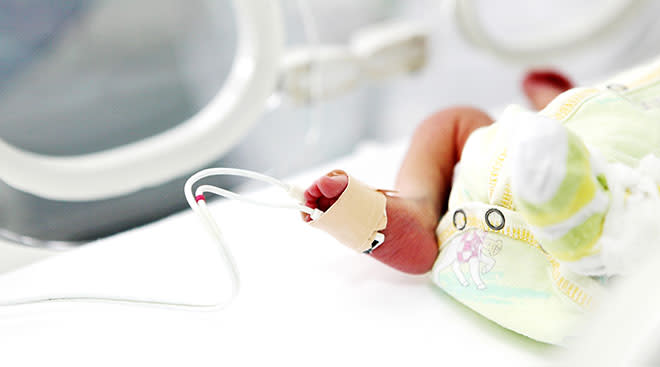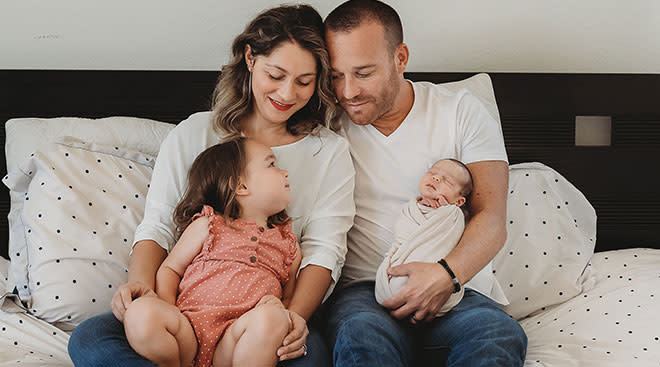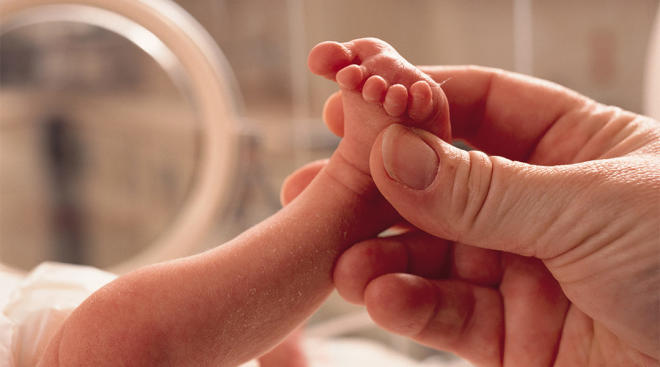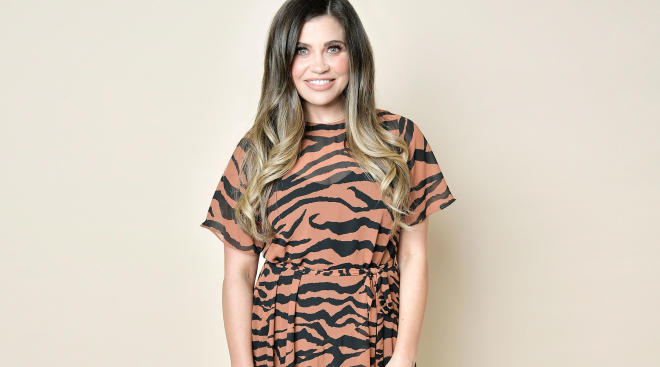Kangaroo Care: the Benefits of Skin-to-Skin Contact With Baby
In all the ways we might look to nature for parenting inspiration, it doesn’t get any more real than seeing mama kangaroos snuggle their babies shortly after birth: skin-to-skin, nuzzle-to-nipple, inside the pouch. As the name implies, kangaroo care for newborn humans mimics this marsupial practice, with mom and baby cuddling up with their bare skin touching. Curious why this skin-to-skin contact is being hailed by medical professionals and parents alike? Keep reading to learn about the host of benefits it yields for both baby and Mom (and other family members too!).
Kangaroo care is early, continuous and prolonged skin-to-skin contact between mothers and babies, according to the World Health Organization. There are some variations of kangaroo care, but all of them involve skin-to-skin contact, where baby is naked except for a diaper and a blanket (or the parent’s shirt) covering their back. In an ideal situation—when a baby is born healthy and doesn’t need resuscitation—a nurse, doctor or midwife places a newborn upright against its mother’s bare chest just after birth. Not only does this help facilitate the first breastfeeding session, but with the baby smelling its mother and feeling her warmth, it provides a sense of security outside the womb.
“Babies acclimate to the new world a lot more easily if they are skin-to-skin,” says Salena Zanotti, MD, an ob-gyn at the Cleveland Clinic. “They go through a process after being born and if you watch, they want to sit on mom, they’re quieter, they start to wiggle and make their way to the breast all on their own.”
Research has shown that the first hour after birth is a critical time for bonding between parents and baby. Not only does placing a newborn on a mother’s body help with security and feeding, it also helps regulate baby’s body temperature and breathing. Kangaroo care was first widely used in Bogotá, Colombia, in the late 1970s to help combat low survival rates of preterm babies. Researchers found that preemies who were held close to their mothers’ bodies for much of the day not only lived, but thrived.
Today, kangaroo care is used in most US neonatal intensive care units (NICUs), Zanotti says, and has become a mainstream practice for term births as well, growing in tandem over the past decade with the increasing number of designated baby-friendly hospitals where kangaroo care is a key tenet.
Most NICUs in the US use skin-to-skin contact for various physical benefits, but it’s got lots of behavioral upsides too. Studies have shown that kangaroo care can help:
- Regulate baby’s body temperature
- Stabilize baby’s heart rate and improve their breathing patterns and oxygen saturation levels, since feeling their mother’s heart beat and breathing can calm baby
- Lower baby’s chance of infection, severe illness and death, since skin-to-skin contact exposes baby to mom’s bacteria and strengthens their immune system
- Promote better sleep in baby
- Lead to faster gain weight, since babies resting on their mothers tend to be more calm and sleepy, which means they’re conserving energy and using their calories for growth and weight gain
- Pacify baby, helping them cry less
- Encourage more successful breastfeeding, since not only are babies closer to the source, but having them near mom’s body also helps boost milk production
- Strengthen the mother-child bond
- Decrease baby’s pain levels during shots and heel sticks, since lolling on mom (or another family member!) cuts a baby’s stress level, which can help reduce the amount of pain they feel during routine neonatal procedures
These benefits of kangaroo care are overwhelmingly positive for preemies, but full-term babies experience most of them too. “There’s a reason animals do it,” says Zanotti. “It’s natural to have a baby and bring them up right next to you—they shouldn’t be going anywhere else.”
If you give birth vaginally to a full-term baby in a hospital that supports kangaroo care, staffers will hold off on measuring and weighing your newborn until after you’ve had a few minutes of skin-to-skin contact. Once your newborn has been dried off, they’ll place baby on your chest or abdomen, depending on how long the umbilical cord is.
“Baby’s legs should be flexed under them and the head should be off to one side—keep an eye on their breathing,” says Laniece Coleman, DNP, CNM, head of the midwifery program within the ob-gyn department at Thomas Jefferson University Hospital. “Baby should have a hat on and kept under a blanket while on their parent.”
Kangaroo care after a c-section
While 60 minutes of skin-to-skin contact in the first 24 hours after birth is ideal, it might not be possible if you’ve had a c-section. Some hospitals try to accommodate for a few minutes of skin-to-skin in the OR, bringing baby up to mom’s face or chest while she’s being stitched up. Another option: Your birth partner can snuggle baby too. Obviously your newborn won’t be getting the breastfeeding benefits that come from you, but research shows that feeling someone’s heartbeat and warmth goes a long way in keeping baby less stressed, especially during or right after a painful procedure, like circumcision. “If something’s going on with Mom, another support person or loved one can step in and do skin-to-skin,” says Coleman. “You’ll see less newborn crying and regulation of blood sugar levels.”
If baby is born early or needs additional medical care and goes directly to the NICU, skin-to-skin contact will come later, once they’re stabilized. Nurses will show you how to navigate any wires or tubes so you can hold baby against you.
Continuing kangaroo care at home
Don’t give up on kangaroo care once you leave the hospital! Stripping baby down to their diaper and holding them against your bare torso at home (with a blanket draped over you both) is a great way to nurture the bond, as long as baby seems to enjoy it. Healthcare staffers recommend at least one hour a day for the first three months of baby’s life; do more if you have the time. “We find that babies cry less in those situations,” says Coleman. “It calms them down.”
Don’t discount the power of human touch. “When I started training 20 years ago, we didn’t do kangaroo care, and when we switched over, it was like, ‘this makes the most sense in the world—animals have been doing it for centuries,’” says Zanotti. “For humans, science got in the way and we made the delivery process a little too mechanical. We’ve now come back and realized that these natural processes exist for a reason.”
About the experts:
Salena Zanotti, MD, is an ob-gyn at the Cleveland Clinic, where she has been working since 2010. She earned her medical degree from Pennsylvania State University in 1997.
Laniece Coleman, DNP, CNM, is a certified nurse midwife and head of the midwifery program within the ob-gyn department at Thomas Jefferson University Hospital. She is also an assistant professor in the department of obstetrics and gynecology at Drexel University College of Medicine.
Please note: The Bump and the materials and information it contains are not intended to, and do not constitute, medical or other health advice or diagnosis and should not be used as such. You should always consult with a qualified physician or health professional about your specific circumstances.
Plus, more from The Bump:
Navigate forward to interact with the calendar and select a date. Press the question mark key to get the keyboard shortcuts for changing dates.
































